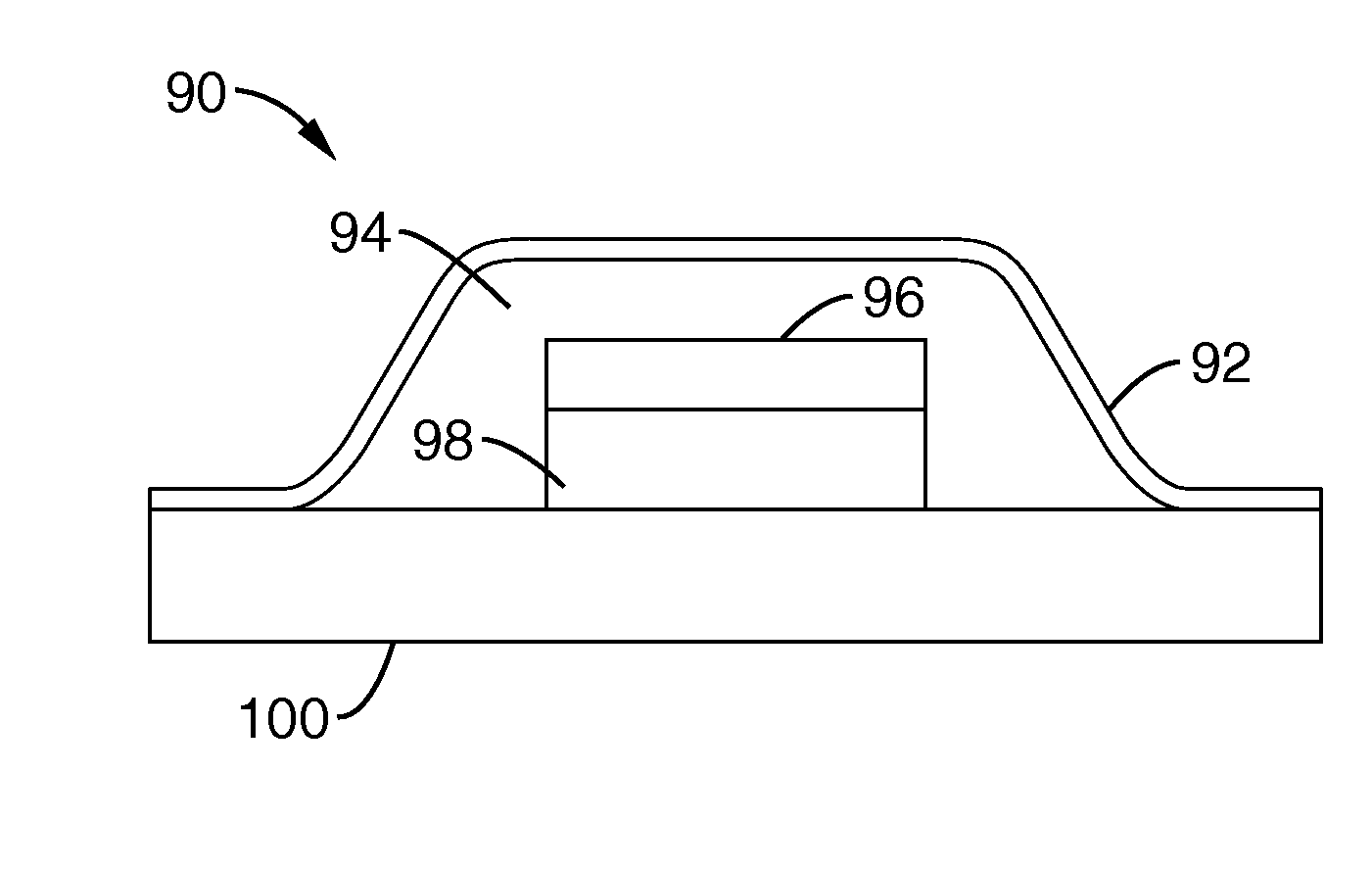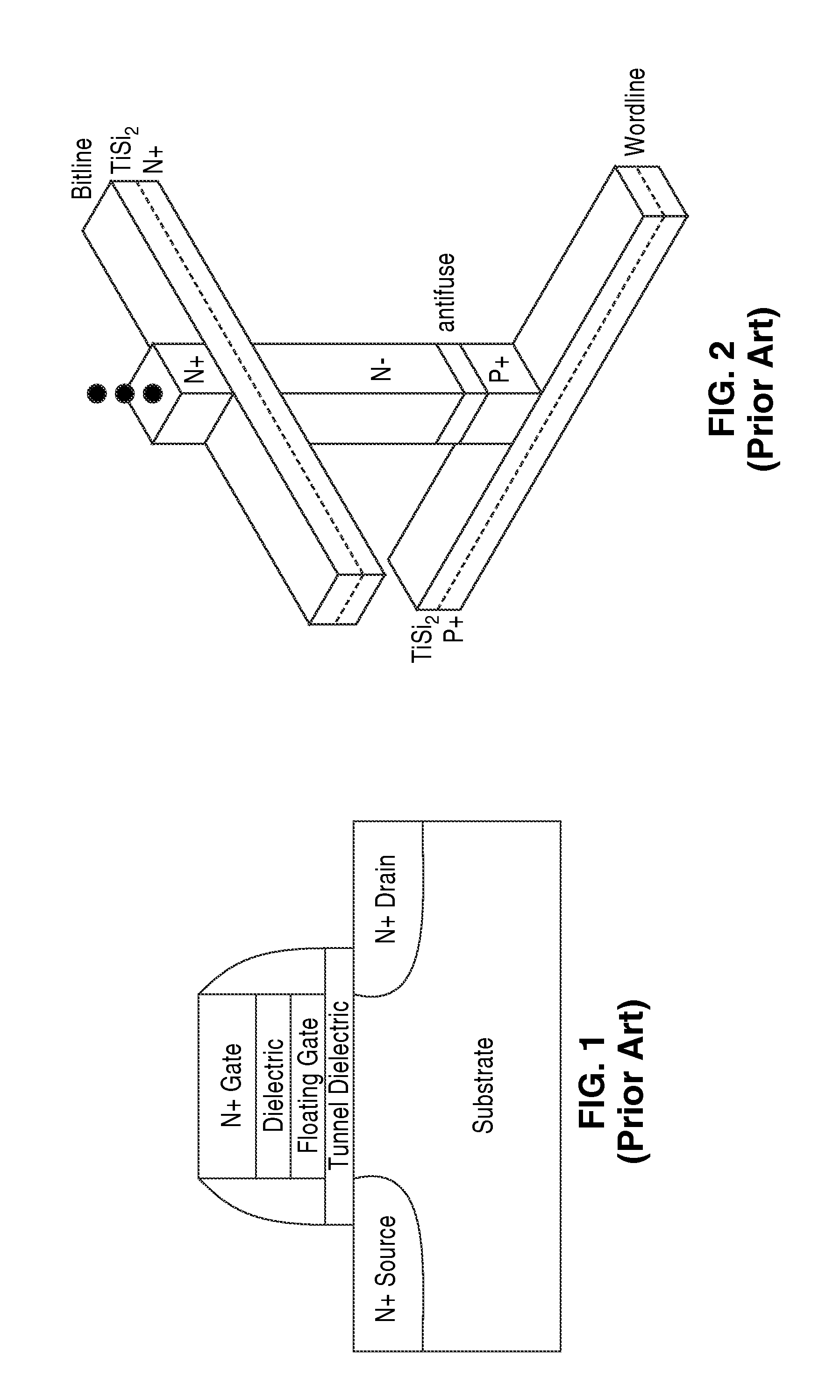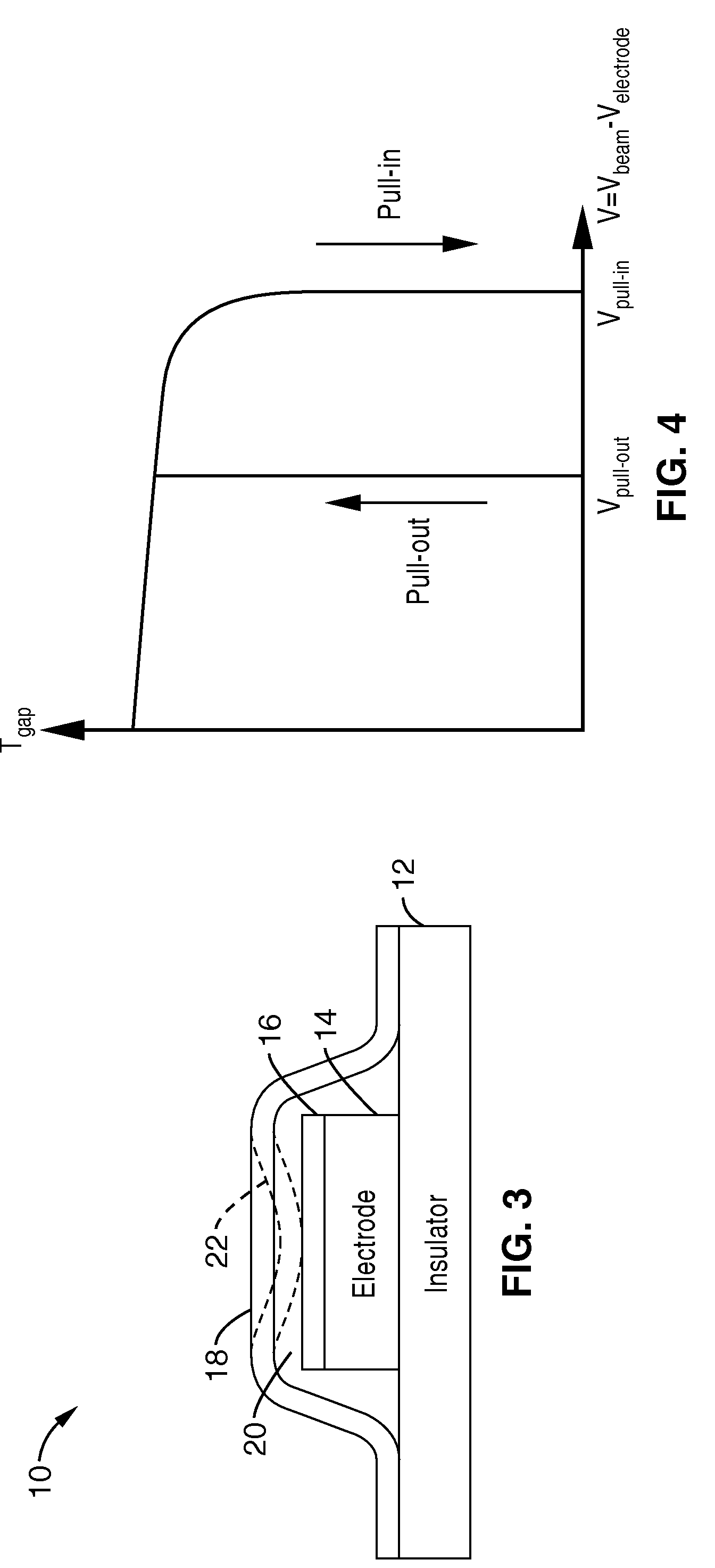Nano-electro-mechanical memory cells and devices
a technology of electronic and mechanical components and memory cells, applied in the field of memory cells, can solve the problems of increasing process complexity and hence cost, power consumption and cost, and inability to reprogramme, and achieve the effect of low voltage levels and high density cross-poin
- Summary
- Abstract
- Description
- Claims
- Application Information
AI Technical Summary
Benefits of technology
Problems solved by technology
Method used
Image
Examples
Embodiment Construction
[0122]Referring more specifically to the drawings, for illustrative purposes the present invention is embodied in the apparatus generally shown in FIG. 3 through FIG. 46. It will be appreciated that the apparatus may vary as to configuration and as to details of the parts, and that the method may vary as to the specific steps and sequence, without departing from the basic concepts as disclosed herein.
1. NANO-ELECTRO-MECHANICAL MEMORY (NEMORY)
[0123]FIG. 3 through FIG. 6 illustrate aspects of a nano-electro-mechanical (NEM) nonvolatile memory cell according to the present invention, which is herein referred to for the sake of brevity as a “NEMory”. In this example a portion of the mechanical beam remains undeflected (not stuck down) when representing a data “1” state, or deflected (stuck down) in representing a data “0” state.
[0124]In FIG. 3 a first example embodiment 10 is depicted showing a substrate 12 (e.g., insulator) upon which is retained an electrode 14 with dielectric layer 1...
PUM
 Login to View More
Login to View More Abstract
Description
Claims
Application Information
 Login to View More
Login to View More - R&D
- Intellectual Property
- Life Sciences
- Materials
- Tech Scout
- Unparalleled Data Quality
- Higher Quality Content
- 60% Fewer Hallucinations
Browse by: Latest US Patents, China's latest patents, Technical Efficacy Thesaurus, Application Domain, Technology Topic, Popular Technical Reports.
© 2025 PatSnap. All rights reserved.Legal|Privacy policy|Modern Slavery Act Transparency Statement|Sitemap|About US| Contact US: help@patsnap.com



